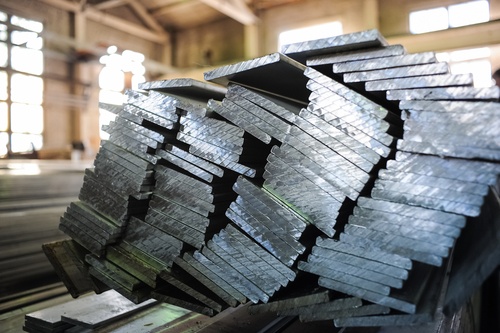
Metal alloys are defined as two metals, or one metal and another non-metallic element, combined together. Different from a naturally impure metal, alloys are created to produce a metal with desirable qualities.
Metals in their raw form actually tend to be quite weak, making them unsuitable for fabrication work. By mixing them into alloys, the most desirable properties of multiple materials can be combined into one.
For example, adding carbon to iron creates steel, which is one of the most common alloys used on earth. Alternatively, adding the element chromium to iron creates stainless steel, which is resistant to corrosion.
Carbon Steel
Iron that is combined with impure carbon – up to 2% of the total composition – creates carbon steel. As more carbon is added to iron, the resulting steel becomes harder and stronger. Conversely, the increase in hardness means the steel becomes more brittle and susceptible to breaking.
Additionally, as carbon content increases, the steel becomes more difficult to weld, and the melting point goes down. Carbon steel is commonly used in automotive applications, load-bearing wire, springs, and blades.
Stainless Steel
When iron is alloyed with 10.5% or more chromium, stainless steel is the resulting material. Stainless steel does not corrode or rust as easily as carbon steel does, making it preferable in many applications.Chromium can be added up to a mixture of 26% for maximum corrosion resistance.Stainless steel is a poor conductor of electricity, and its appearance makes it popular for use in a wide range of applications like kitchen appliances,hardware, aerospace/automotive, and in structural applications like bridges and storage vessels.
Aluminum Alloy
On its own, aluminum is soft and lightweight. It is combined with other metals like copper, tin, zinc, or magnesium to create different levels of strength and durability. Because of its relative softness, aluminum alloy is easy to work, and cast aluminum products are inexpensive because of their ease of manufacture. Aluminum alloys are used in a wide range of industries, from aerospace to shipbuilding and everything in between. Aluminum allows fatigue faster than steel, and will weaken when repeated stress is applied.
Choosing the right metal alloy for your repair or fabrication needs is a critical part of the process. At Domer’s Inc., our team of expert fabricators can help you choose the perfect material. For more information, call us today at 863-763-3417.
Domer's Inc.
204 SE 10th AvenueOkeechobee, FL 34974
Get Customized Directions Here
Tel: (863) 763-3417
Fax: (863) 763-7339
Email: [email protected]
Business Hours:
M-F 7:30am - 5:00pm
Closed Weekends
Emergency Service
Available 24/7
 Follow Us on Facebook
Follow Us on Facebook

